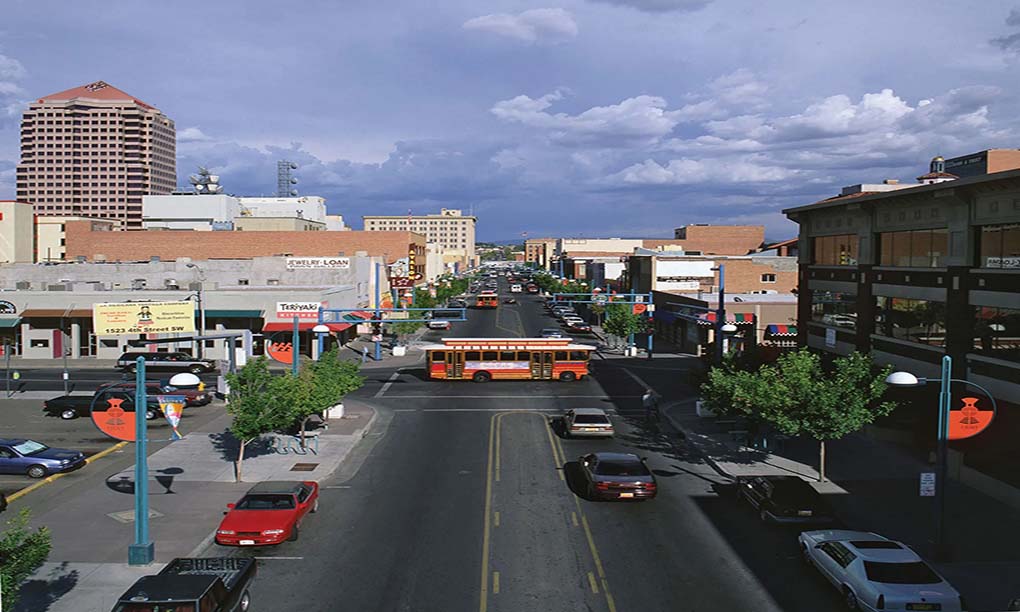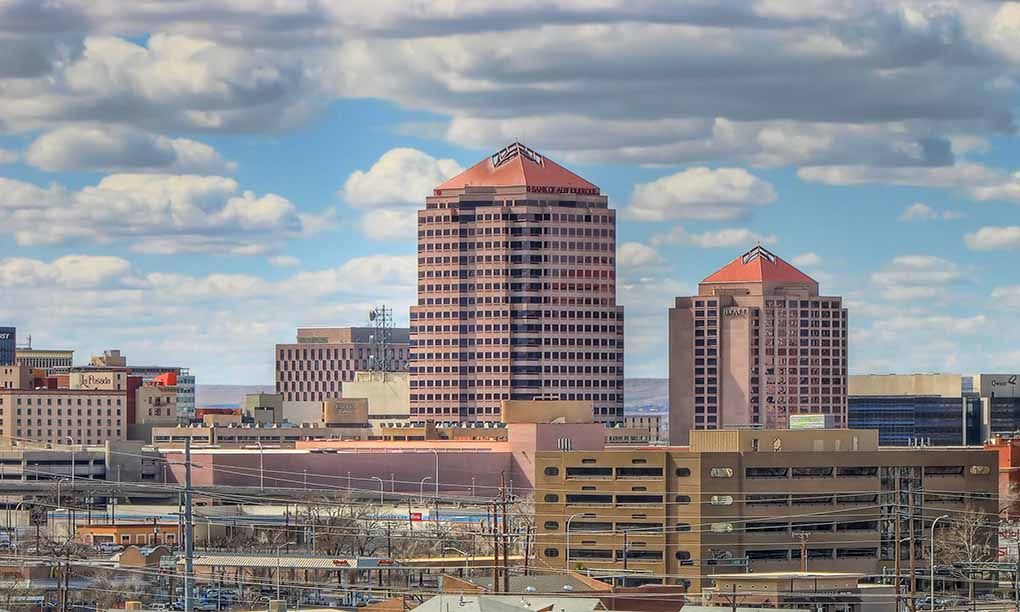Albuquerque, New Mexico, is a city that effortlessly blends Native American, Spanish, and Anglo cultures into a unique and welcoming experience. As a first-time visitor to Albuquerque, understanding a bit about the local language and cultural nuances can make your trip that much more enjoyable.
I’ve had the privilege of visiting Albuquerque multiple times, and each time, I’ve learned new ways to connect with the people here. Whether it’s the friendly locals at a coffee shop or the welcoming faces at a local museum, communication is key to making the most of your time in the city. From language tips to cultural insights, this article will give you the tools to navigate conversations and enjoy the rich cultural fabric of Albuquerque.
So, if you’re heading to this southwestern gem, here are 10 essential communication and cultural tips that will help you connect with Albuquerque’s warm and diverse community, making your visit even more memorable.
1. Embrace the Local Dialect and Linguistic Influence
One of the first things I noticed when I visited Albuquerque is the influence of both Spanish and Native American languages on the local dialect. New Mexico, and particularly Albuquerque, has deep cultural roots from its Spanish colonial history and the rich presence of Native American tribes, such as the Pueblo, Navajo, and Apache people. As a result, many words and phrases from both languages have become part of everyday speech.
While English is the predominant language spoken in Albuquerque, Spanish is commonly used in many contexts—whether it’s street names, food items, or even casual greetings. You’ll often hear locals greet each other with a warm “Hola” (Hello) or say “¿Cómo estás?” (How are you?). Don’t be afraid to throw in a few Spanish words into your conversations—it’s appreciated, and locals will enjoy your effort to connect with their heritage.
When you’re exploring restaurants or markets, you might hear food items like “enchiladas,” “tamales,” or “posole”. Learning how to pronounce these words correctly (or at least trying) can help break the ice with locals who will appreciate your respect for the local culture.

Tip: If you’re not fluent in Spanish, don’t worry! Locals are usually patient, and many are bilingual, so they’ll switch to English without hesitation if you need help.
2. Be Ready to Hear “Red or Green?”
When it comes to food in Albuquerque, there’s a question you’ll hear often—“Red or green?” This question is a staple of the city’s cuisine, especially when ordering New Mexican dishes like enchiladas, burritos, or tamales. The question refers to the two types of chile sauces that are common in New Mexico: red chile (made from dried red chilies) and green chile (made from roasted green chilies).
During my first visit to Albuquerque, I was caught off guard when a waitress asked me this after I ordered my meal. It felt like a secret code! While both red and green chiles are delicious, they each offer a unique flavor profile. Green chile is more vibrant and slightly tangy, while red chile tends to be smokier and deeper in flavor. Don’t hesitate to ask for Christmas-style, which is a combination of both red and green chiles. If you’re not sure which one to choose, I recommend starting with green—it’s a local favorite!
Tip: If you’re sensitive to spice, let the restaurant know. While the chiles used in Albuquerque’s cuisine are often mild to medium in heat, it’s always good to give them a heads-up.
3. Be Respectful of Native American Culture and Traditions
One of the most enriching aspects of Albuquerque is its connection to Native American culture. With Pueblo tribes such as Acoma and Zuni, and others like the Navajo and Hopi living in the surrounding areas, Albuquerque is steeped in traditions that have existed for thousands of years. As a visitor, it’s important to approach Native American culture with respect.
If you’re visiting Native American pueblos or cultural sites, remember that these are sacred spaces. It’s common to see signs asking visitors not to take photos in certain areas, particularly in religious or ceremonial spaces. When visiting art galleries or shops that sell Native American crafts, take the time to learn about the meaning behind the artwork or jewelry. Many of these pieces carry cultural significance, and asking questions about them is often encouraged.
During my visits, I’ve found that locals are always eager to share their stories, and asking respectful questions about culture can lead to fascinating conversations. Just make sure to be mindful and polite, especially when discussing religion or sacred practices.
Tip: One of the most beautiful ways to engage with Native American culture is by attending the Indian Pueblo Cultural Center in Albuquerque, where you can learn about the history and art of the Pueblo people.
4. Understand the Significance of “Southwest” Hospitality
One of the most striking things about Albuquerque is its undeniable sense of hospitality. As soon as you arrive, you’ll notice the warm, friendly attitude of the locals. Whether you’re at a coffee shop, in a taxi, or simply wandering the streets, you’ll find that people are genuinely kind and eager to make you feel welcome.
Southwestern hospitality is about openness, generosity, and creating a sense of community. Don’t be surprised if strangers strike up a conversation with you, especially if you’re wearing a camera around your neck or asking for directions. Locals are more than happy to offer recommendations on where to eat, what to see, and how to experience the true heart of Albuquerque.
Tip: While many locals are chatty and helpful, make sure to return the warmth. A smile and a “thank you” go a long way in this friendly city.
5. Familiarize Yourself with Local Events and Festivals
Albuquerque is home to many events and festivals that celebrate its vibrant culture, and understanding their significance can help you connect more with locals. One of the most famous events is the Albuquerque International Balloon Fiesta, held every October, where hundreds of hot air balloons fill the sky in a breathtaking spectacle. As you chat with locals, you might hear people enthusiastically talking about the fiesta months before it starts.
Another beloved tradition is the Gathering of Nations, one of the largest Native American powwows in the world. When I visited during the Gathering, I could feel the excitement and pride from the local Native American community. Locals are eager to share their pride in these events, and showing interest can open doors to rich conversations and experiences.
Tip: Check the Albuquerque Convention & Visitors Bureau website or download the Visit Albuquerque app to stay updated on the city’s events calendar. Being informed will show locals that you’re genuinely interested in their culture and traditions.
6. Be Mindful of Local Customs and Etiquette
When it comes to communication in Albuquerque, being mindful of local customs can go a long way. For example, when you’re greeting people, a simple “How’s it going?” or “How’s your day been?” is much more common than the formal “How do you do?” you might hear in other parts of the U.S. People here are laid-back, and the pace of life tends to be slower and more relaxed.
Another cultural consideration is how personal you get in conversations. New Mexicans are friendly, but they may not always open up about their personal lives immediately. Asking too many personal questions right off the bat might make them uncomfortable. Instead, focus on shared topics such as the weather, food, or local events.
Tip: If you’re meeting someone for the first time, keep the conversation light and casual, especially in the beginning. As relationships develop, you’ll naturally get to know more personal details.
7. Use Local Resources for Booking Your Trip
To make your trip to Albuquerque as easy as possible, I recommend using some of the top U.S.-based travel booking platforms. Sites like Expedia, Airbnb, Booking.com, and Hotels.com will allow you to compare prices and find the best deals on flights, accommodations, and attractions. If you’re a foodie, platforms like OpenTable can help you secure reservations at popular local restaurants, especially during peak times.
For tickets to attractions and museums, GetYourGuide and Viator offer a wide range of options for booking tours, tickets to events like the Balloon Fiesta, or even guided city tours. These platforms help you avoid the hassle of waiting in line and let you explore Albuquerque’s many hidden gems at your own pace.
8. Don’t Forget to Mention Your Interests
Whether you’re a history buff, nature lover, or foodie, Albuquerque locals love when visitors share their interests. As I walked through the city on my first trip, I learned that the locals here are incredibly knowledgeable about the areas they live in. If you mention your interests, chances are they’ll point you in the right direction for local attractions or unique experiences that align with what you’re looking for.
For example, if you’re a fan of architecture, locals will happily direct you to some of Albuquerque’s beautiful adobe buildings, many of which date back centuries. Or, if you’re an art lover, there are countless galleries and local art markets where you can get a taste of the city’s creative scene.
Tip: Whenever you’re speaking to locals, don’t hesitate to share a little about your interests. They’ll likely have great suggestions you might not find in a guidebook.
9. Be Aware of the New Mexico State Symbols
While this may not seem like a communication tip, understanding the significance of New Mexico’s state symbols can help you connect more deeply with the local culture. For example, the Zia symbol, found on the state flag, is not just a design—it represents the Four Corners of life: the four seasons, the four directions, and the four stages of life.
Locals are incredibly proud of their state, and if you bring up the significance of the Zia symbol, they’ll be more than happy to share more about it. Whether you’re talking about the state bird (the Greater Roadrunner) or the state flower (the Yucca), these symbols play a role in daily life and conversations around Albuquerque.
Tip: Try incorporating some of these symbols into your conversations. It’ll show locals that you’ve taken the time to understand their cultural heritage.

10. Slow Down and Enjoy the Moment
Finally, one of the most valuable lessons I’ve learned in Albuquerque is the importance of slowing down and truly savoring the moment. The city, with its relaxed pace and warm energy, encourages you to enjoy life’s simple pleasures. Whether you’re sipping coffee at a local café or watching a sunset over the Sandia Mountains, take your time to enjoy the experience.
This slow, deliberate pace extends to how locals communicate as well. People here aren’t in a rush to get through a conversation—they value quality interactions over quick exchanges. So when you’re in Albuquerque, take your time to listen, connect, and appreciate the stories people share.
Tip: When interacting with locals, don’t rush through conversations. Take time to really listen to what they have to say. You might be surprised at the wonderful stories they’ll share.
A Rich Tapestry of Culture Awaits
Albuquerque is a city rich in history, culture, and character. By embracing its unique blend of language, customs, and traditions, you can create meaningful connections with the locals and truly experience all the city has to offer. Whether it’s practicing a bit of Spanish, exploring the significance of local symbols, or simply slowing down to appreciate the moment, the key to making your visit unforgettable is connecting with the people and their culture. So take these tips to heart, and let the warmth of Albuquerque’s people guide you through your adventure.
Tags: Be Respectful of Native American Culture and Traditions, Effective Communication in Albuquerque, Familiarize Yourself with Local Events and Festivals